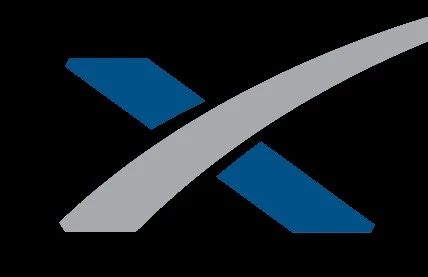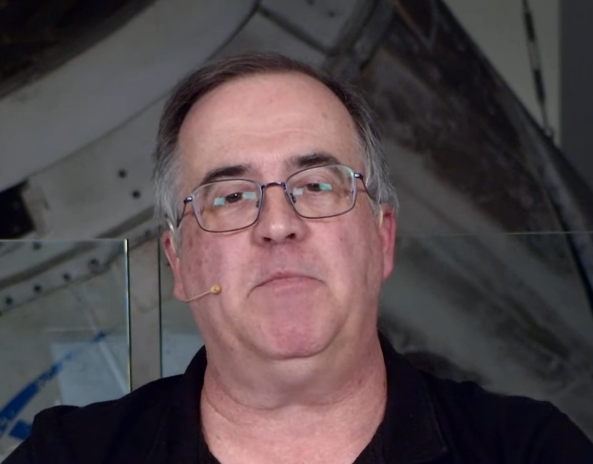

Not really. There’s a hover test vid uploaded in 2016 but they cheated. (It’s held up by a rope!)
Or you could play the first 17 seconds of the pad abort test in reverse …


Not really. There’s a hover test vid uploaded in 2016 but they cheated. (It’s held up by a rope!)
Or you could play the first 17 seconds of the pad abort test in reverse …


At 52:05, Stephen Clark asked about this. The start of Gerst’s answer is:
We’ve actually flown it on several other dragon flights before this. This is the first time it flies on a NASA mission.
So, perhaps Inspiration 4? Presumably Polaris Dawn? And I guess the Axiom missions are being counted as non-NASA in this context, so some of those?
Before doing something like this I think you should ensure that it reduces the overall risk to the crew. So you’d need to have an estimate of how likely it is that all the parachutes fail, and how likely it is that the SuperDracos could save lives in that situation, but also an estimate of how likely this capability is to go wrong. For example, could there be a bug in the software or in some sensor(s), that causes the SuperDracos to fire when they weren’t needed? Would the SuperDracos otherwise be in an inactive state during re-entry, and if so, what are the risks of having them active? Etc…
Those 2 sentences from Gerstenmaier suggest to me that SpaceX had already decided that, on balance, this capability should be enabled. Whereas NASA have only just reached that conclusion.


first operational mission for August 2025. But the agency set that schedule before realizing Boeing and Aerojet Rocketdyne would need to redesign seals and perhaps other elements
Not sure this is correct. I had thought the slip from Feb 2025 to Aug 2025 was only announced quite recently. Say, a month ago?
(Not that I’m saying I think the Aug 2025 date will be achieved. I’m 75% sure it won’t.)


as far as I’m aware, they’ve done 1 EVA to look at the thing
Don’t think so.
They do have access to camera imagery, but as you say, most problems like this probably need much more intrusive investigation.


How could I forget!
TBH, I mean that in the sense that you can’t forget something you never knew about in the first place ;)
I had never heard of this concept before. Is it something to do with this?


(I looked it up because I was vaguely wondering whether broadcasting this would be too embarrassing!)


If the Boe-CFT mission had gone to plan, Crew-9 would have been scheduled to launch in mid August with Zena Cardman commanding. The article reports that she has just announced that her father died in August, perhaps about a week before what would have been the launch date.
Got me wondering how situations like that are handled. And what if a close family member dies just a day or two before launch? Or even less time than that?
On a related matter, I’ve also been wondering at what point the backup crews are ‘stood down’. I don’t think it’s the very last minute. I think there’s a window of time during which any serious issues to do with a member of a primary crew would just result in a scheduled launch not going ahead (as opposed to going ahead on schedule but with a crew member swapped out).
Damn, they should’ve collab’ed with the Marshall Mathers Space Flight Center, like I been sayin
(I sent two letters back in autumn, JAXA must not’ve got 'em. There prob’ly was a problem at the post office or somethin)


Plus the occasional ULA sniper wielding the SpaceXpelliarmus spell.


A landing leg failure, for example, likely could be quickly cleared because it is not used in other phases of flight
I assume SpaceX wouldn’t make any big assumptions along these lines though?
I imagine, for example, that a worn component that could fail catastrophically on landing might also be at risk of some kind of failure during max Q, in a way that affects the primary mission.
Of course, there could come a point where you judge that so unlikely as to be not worth wasting any (further) time on.
But as an armchair observer I’m fairly glad to see a pause at this point before Polaris Dawn, even just a couple of days …
“We’re just focused on recovery weather at this point,” he said after the announcement of the FAA investigation into the booster landing anomaly. “I think that is still gate to our launch.”
Surprising. Does this mean they have good reason to think they’ll get a Public Safety Determination in a matter of days? Does the FAA work weekends?
P.S. If a landing leg realistically could, say, pop open at max Q, I guess that further strengthens the argument in favour of rocket ‘catchings’ rather than rocket landings!


the company will likely need to redesign some elements in the spacecraft’s propulsion system to remedy the problems
I expect they’ll make a change to whatever is responsible for the helium leaks. But as for keeping the thrusters healthy, Steve Stich keeps talking about software/operational changes as a way to accomplish that, so we might not see much of a redesign (at least in the short/medium term).
Had the Starliner test flight ended as expected, with its crew inside, NASA targeted no earlier than August 2025 for Boeing to launch the first of its six operational crew rotation missions to the space station. In light of Saturday’s decision, there’s a high probability Starliner won’t fly with astronauts again until at least 2026.
Wasn’t it actually February 2025? With the delay to August 2025 only announced very recently, as a result of all these CFT problems?
And that might be all the extra time Boeing needs. Especially considering my previous point.
originally planned for an eight-day stay at the station
Well, yes, as a bare minimum.
the owners of a private space station will almost certainly go with the less expensive, flight-proven vehicle to transport people to and from orbit.
Will it be their decision, when the people being transported are NASA astronauts? I could easily see NASA wanting to continue their ‘dissimilar redundancy’ policy indefinitely.


Me too. I had thought we were talking about a 1% chance or something like that.
But at the press conference, one of the journalists seemed to be asking about the probability of disaster, and gave 10% as an example. None of the NASA people took the opportunity to say “no that’s far too high”, or “I’m very confident the uncrewed return of Starliner will be successful”, or anything like that.


I’ve been wondering why there’s such a big gap between Starliner’s expected departure (“early September”) and the launch of Crew-9 (no earlier than 2024-09-24).
My least bad guess is that NASA doesn’t see much difference in the risk of having Butch & Suni return as (little more than) cargo inside Crew-8’s Dragon capsule, and the risk of them returning in the actual standard/proper crew configuration in this Starliner capsule. In which case they might as well get Starliner back ASAP, while making no attempt to bring the Crew-9 date forward (which could have been doable given that the plan as of last month was to be ready by 2024-08-18).
Has anyone got a better guess?
I do know that a standard Starliner departure involves waiting for a suitable opportunity / time window. But there must be suitable opportunities much closer to the 24th, right? Why aren’t they waiting for the last possible (or maybe penultimate) opportunity? In the unlikely event of Starliner failing to undock or whatever, it’d be no big deal to delay Crew-9 again, so I don’t think that would be the reason.
I had been imagining a much greater level of dependency or ‘coupling’ between the two events. Perhaps with NASA looking at the Crew-9 launch weather forecasts before deciding whether to undock Starliner about 3 days earlier, or something. Or even (less seriously), the Crew-9 crew strapped into their Dragon, on the launchpad, and hearing on their comms system something like “Starliner has successfully exited the ISS’s Keep Out Sphere, so NASA is ‘go’ for propellant load on Falcon 9”.
I was hoping somebody would ask this question during the press conference, but they didn’t.


the host says they’re going to higher altitudes than the Apollo program
Ah, yes, well normally that would be my opportunity to remind people of Gell-Mann amnesia.
But this time it’s unfair to the host. Isaacman has made that mistake himself on (I think) multiple occasions. She might have got it from him. (Perhaps indirectly.) Here’s one: https://youtu.be/aASZ2rKdS6I?t=1m2s (He meant “since”, not “than”.)
One source of confusion might be if this crew is planning to be in the highest ‘free’ orbit of Earth ever occupied by humans. Where I’m using ‘free’ as a vague way of trying to exclude, for example, the astronauts who were actually on the moon (which is of course orbiting the Earth).
Is that a scientifically/technically legitimate & meaningful distinction? If so, is there a better term for it?


the host says they’re going to higher altitudes than the Apollo program
Ah, yes, well normally that would be my opportunity to remind people of Gell-Mann amnesia.
But this time it’s unfair to the host. Isaacman has made that mistake himself on (I think) multiple occasions. She might have got it from him. (Perhaps indirectly.) Here’s one: https://youtu.be/aASZ2rKdS6I?t=1m2s (He meant “since”, not “than”.)
this one doesn’t really have anything that makes it fundamentally unsafe.
You’re probably right, but we’ll see. The altitude and the spacewalk are the first big new initiatives for SpaceX’s human spaceflight work that haven’t been done under close NASA supervision. That’s probably a good thing but … I’m nervous.
Talking of the altitude, this is from the article:
The mission is scheduled to launch between 3:30 and 7 a.m. Eastern Aug. 26 in one of three instantaneous launch windows. Isaacman said the launch times were selected by SpaceX to minimize the micrometeoroid and orbital debris impact risk to the mission given its unconventional orbit.
He said it during the event (which is available to watch here), and I don’t think any further explanation was given for why certain launch times are better than others for MMOD. Does anyone understand why? Is it obvious? Any resources I could check out to learn more?
Talking of the article, they still haven’t fixed the first sentence!:
spacewalk on a is ready
If Jeff or anyone else from Space News is reading this, hire me as your proofreader!


Interesting title on the video about this, just uploaded to YT by CBS News: SpaceX sending private citizens on risky mission that includes spacewalk attempt
I find myself agreeing with the sentiment. I’m fairly nervous about this mission.
Don’t get me wrong, I’d jump at the chance to join it. I’d choose it over a routine trip on Starliner, but not for the reason you might be thinking. … I can’t help wondering if Polaris Dawn is both higher risk and reward than a routine trip on Starliner.


No, that’s this one, funded by a crypto billionaire, announced a week ago and launching in ~4 months.
Polaris Dawn is funded by a payments processing billionaire, announced 2.5 years ago, and launching this month.


That has to be a requirement regardless I guess since a depressurization could happen on any flight.
Yes, this has been pointed out by the crew (IIRC) in an interview about the mission. (Not to suggest that no work was needed on the issue, just less work than people might expect. Obviously it can be the case that taking an unlikely contingency scenario and making it a deliberate part of a mission, raises the level of assurance needed.)
Animation of a ‘land landing’: https://youtu.be/Cf_-g3UWQ04?t=1m32s